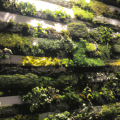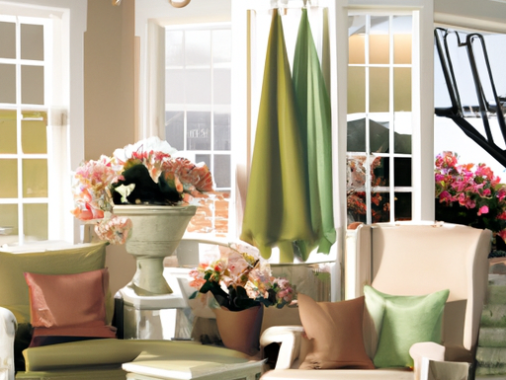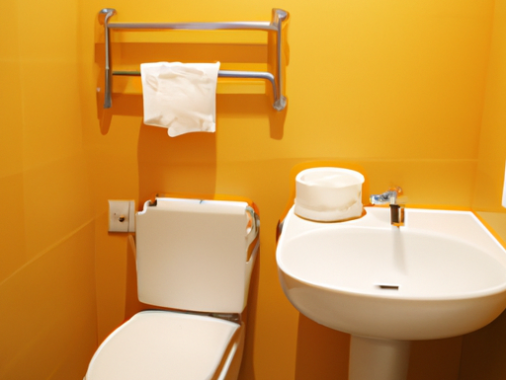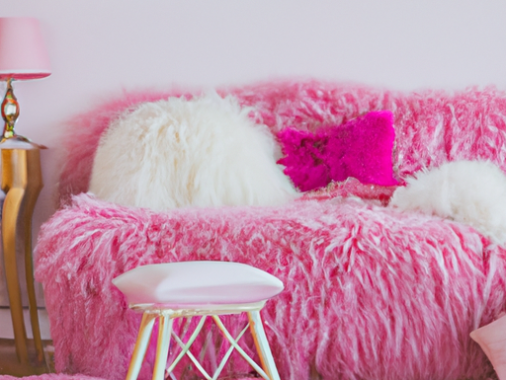-
Table of Contents
- Introduction
- How to Create a Garden Art Gallery
- The Benefits of Garden Art for Mental Health
- The History of Garden Art
- Creative Ideas for Garden Art Projects
- How to Incorporate Garden Art into Your Landscape Design
- The Best Materials for Garden Art
- The Impact of Garden Art on Local Wildlife
- Q&A
- Conclusion
Introduction
Garden art is a great way to add a unique and personal touch to your outdoor space. It can be used to create a beautiful and inviting atmosphere, or to make a statement about your style and personality. Garden art can range from sculptures and statues to planters and birdhouses, and can be used to create a focal point or to add a touch of whimsy. Whether you’re looking for something to add a bit of color or to make a bold statement, garden art is a great way to express yourself and make your garden stand out.
How to Create a Garden Art Gallery
Creating a garden art gallery is a great way to showcase your favorite pieces of art and add a unique touch to your outdoor space. Whether you’re looking to display sculptures, paintings, or other forms of art, there are a few steps you can take to create a beautiful and inviting garden art gallery.
Step 1: Choose a Location. The first step in creating a garden art gallery is to choose a location. Consider the size of the space you have available and the type of art you plan to display. If you’re displaying sculptures, you’ll need a larger space than if you’re displaying paintings. Additionally, consider the amount of sunlight the space receives and the type of soil it has.
Step 2: Prepare the Space. Once you’ve chosen a location, you’ll need to prepare the space for your garden art gallery. Clear away any debris and weeds, and make sure the soil is level. If you’re displaying sculptures, you may need to add a layer of gravel or sand to provide a stable base.
Step 3: Choose Your Art. Now it’s time to choose the art you’d like to display in your garden art gallery. Consider the size and shape of the pieces, as well as the colors and textures. You may want to choose pieces that complement each other or that have a common theme.
Step 4: Install the Art. Once you’ve chosen the art for your garden art gallery, it’s time to install it. If you’re displaying sculptures, you’ll need to secure them in the ground with stakes or anchors. For paintings, you may want to hang them on a wall or fence.
Step 5: Add Finishing Touches. Finally, add some finishing touches to your garden art gallery. Consider adding lighting, benches, or other features to make the space more inviting. You may also want to add plants or flowers to create a more natural look.
Creating a garden art gallery is a great way to showcase your favorite pieces of art and add a unique touch to your outdoor space. By following these steps, you can create a beautiful and inviting garden art gallery that will be the envy of your neighbors.
The Benefits of Garden Art for Mental Health
Garden art has been used for centuries to bring beauty and joy to outdoor spaces. In recent years, however, research has shown that garden art can also have a positive impact on mental health. This article will discuss the various benefits of garden art for mental health and how it can be used to improve overall wellbeing.
Garden art can provide a sense of calm and relaxation. Studies have shown that looking at art can reduce stress and anxiety levels, and this is especially true when the art is in a garden setting. The natural beauty of the garden can help to create a peaceful atmosphere, and the art can provide a focal point for contemplation and reflection. This can be especially beneficial for those who are struggling with mental health issues, as it can provide a safe and calming environment in which to relax and unwind.
Garden art can also be used to promote creativity and self-expression. Creating art in a garden setting can be a great way to express oneself and explore one’s own creativity. This can be especially beneficial for those who are struggling with depression or anxiety, as it can provide an outlet for their emotions and help them to express themselves in a safe and healthy way.
Garden art can also be used to promote physical activity. Studies have shown that spending time in nature can have a positive impact on physical health, and this is especially true when the activity involves creating art. Working in the garden can be a great way to get some exercise and fresh air, and it can also be a great way to get creative and explore one’s own artistic abilities.
Finally, garden art can be used to promote social interaction. Working on a garden project with friends or family can be a great way to connect with others and build relationships. This can be especially beneficial for those who are struggling with mental health issues, as it can provide an opportunity to build meaningful connections with others and foster a sense of community.
In conclusion, garden art can be a great way to improve mental health. It can provide a sense of calm and relaxation, promote creativity and self-expression, encourage physical activity, and promote social interaction. For these reasons, garden art can be a great way to improve overall wellbeing.
The History of Garden Art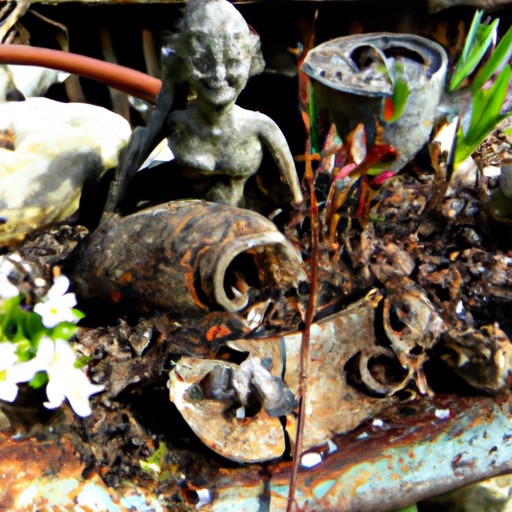
Garden art has been around for centuries, with its roots stretching back to ancient civilizations. From the earliest days of human civilization, people have used art to decorate and enhance their gardens. Ancient Egyptians, Greeks, and Romans all used art to create beautiful outdoor spaces.
In the Middle Ages, garden art was used to create a sense of order and beauty in the garden. Monasteries and castles often featured elaborate gardens with sculptures, fountains, and other decorative elements. During this period, garden art was often used to express religious or political beliefs.
In the Renaissance, garden art became more ornate and elaborate. Artists began to use garden art to create a sense of grandeur and luxury. Fountains, sculptures, and other decorative elements were used to create a sense of grandeur and luxury.
In the 18th century, garden art began to take on a more naturalistic form. Artists began to use plants and other natural elements to create beautiful outdoor spaces. This period saw the rise of the English landscape garden, which featured winding paths, ponds, and other natural features.
In the 19th century, garden art began to take on a more modern form. Artists began to use modern materials such as iron and steel to create sculptures and other decorative elements. This period also saw the rise of the Japanese garden, which featured rocks, sand, and other natural elements.
Today, garden art is used to create beautiful outdoor spaces. Artists use a variety of materials, including stone, metal, wood, and plants, to create sculptures, fountains, and other decorative elements. Garden art is used to create a sense of beauty and tranquility in the garden.
Creative Ideas for Garden Art Projects
1. Mosaic Garden Art: Create a unique garden art piece by using broken pieces of ceramic, glass, and other materials to create a mosaic. This project is great for adding a splash of color to your garden.
2. Garden Sculpture: Create a garden sculpture out of metal, wood, or stone. This project is great for adding a unique and eye-catching element to your garden.
3. Garden Wind Chimes: Create a wind chime out of metal, wood, or glass. This project is great for adding a soothing sound to your garden.
4. Garden Lanterns: Create a garden lantern out of metal, wood, or glass. This project is great for adding a warm and inviting atmosphere to your garden.
5. Garden Fountains: Create a garden fountain out of metal, wood, or stone. This project is great for adding a calming and peaceful atmosphere to your garden.
6. Garden Planters: Create a garden planter out of metal, wood, or stone. This project is great for adding a unique and stylish element to your garden.
7. Garden Trellises: Create a garden trellis out of metal, wood, or stone. This project is great for adding a beautiful and functional element to your garden.
8. Garden Benches: Create a garden bench out of metal, wood, or stone. This project is great for adding a comfortable and inviting element to your garden.
How to Incorporate Garden Art into Your Landscape Design
Garden art can be a great way to add a unique touch to your landscape design. Whether you’re looking for a subtle accent or a bold statement piece, garden art can be a great way to express your creativity and personalize your outdoor space. Here are some tips for incorporating garden art into your landscape design.
First, consider the overall style of your landscape design. Garden art can be used to complement the existing design elements, or to create a contrast. If you’re looking for a subtle accent, choose pieces that are in the same color palette as the rest of your landscape. For a bolder statement, choose pieces that stand out from the rest of the design.
Next, think about the size and scale of the pieces you’re considering. Garden art can range from small sculptures to large installations. Consider the size of the space you’re working with and choose pieces that will fit without overwhelming the area.
Finally, think about the materials you’re using. Garden art can be made from a variety of materials, including metal, wood, stone, and ceramic. Choose materials that will stand up to the elements and complement the existing design elements.
By following these tips, you can easily incorporate garden art into your landscape design. With a little creativity and planning, you can create a unique and beautiful outdoor space that reflects your personal style.
The Best Materials for Garden Art
Garden art can be a great way to add a unique touch to your outdoor space. From sculptures to wind chimes, there are many different types of garden art that can be used to create a beautiful and inviting atmosphere. When selecting materials for your garden art, it is important to consider the environment in which it will be placed. Different materials will have different levels of durability and resistance to the elements. Here are some of the best materials for garden art:
1. Metal: Metal is a great choice for garden art because it is strong and durable. It is also resistant to rust and corrosion, making it a great option for outdoor use. Metal sculptures and wind chimes can add a unique touch to your garden.
2. Wood: Wood is another popular choice for garden art. It is lightweight and easy to work with, making it a great option for creating sculptures and other decorative pieces. Wood is also naturally resistant to rot and decay, making it a great choice for outdoor use.
3. Ceramic: Ceramic is a great choice for garden art because it is strong and durable. It is also resistant to fading and cracking, making it a great option for outdoor use. Ceramic sculptures and planters can add a unique touch to your garden.
4. Glass: Glass is a great choice for garden art because it is lightweight and easy to work with. It is also resistant to fading and cracking, making it a great option for outdoor use. Glass sculptures and wind chimes can add a unique touch to your garden.
No matter what type of garden art you choose, it is important to select materials that are durable and resistant to the elements. By doing so, you can ensure that your garden art will last for years to come.
The Impact of Garden Art on Local Wildlife
Garden art can have a significant impact on local wildlife, both positively and negatively. On the positive side, garden art can provide a habitat for wildlife, such as birdhouses, bat boxes, and bee houses. These structures can provide shelter and nesting sites for birds, bats, and bees, helping to support local populations of these species. Additionally, garden art can provide a source of food for wildlife, such as bird feeders and bee-friendly flowers.
On the other hand, garden art can also have a negative impact on local wildlife. For example, some garden art, such as wind chimes and spinning decorations, can be noisy and disruptive to birds and other animals. Additionally, some garden art, such as birdbaths and ponds, can attract predators, such as cats and raccoons, which can be dangerous for small animals.
In order to ensure that garden art has a positive impact on local wildlife, it is important to choose pieces that are designed to be wildlife-friendly. For example, birdhouses should be made of natural materials, such as wood or clay, and should be placed in a sheltered area away from predators. Additionally, bird feeders should be filled with bird-friendly seed, and bee-friendly flowers should be planted in sunny areas.
By taking the time to choose wildlife-friendly garden art, it is possible to create a garden that is both beautiful and beneficial to local wildlife.
Q&A
1. What is garden art?
A: Garden art is any type of decorative item or structure used to enhance the beauty of a garden. This can include sculptures, wind chimes, birdbaths, and other decorative items.
2. What materials are used to make garden art?
A: Garden art can be made from a variety of materials, including metal, wood, stone, ceramic, and glass.
3. How can garden art be used to enhance a garden?
A: Garden art can be used to add color, texture, and interest to a garden. It can also be used to create focal points or to draw attention to certain areas of the garden.
4. What are some popular types of garden art?
A: Popular types of garden art include sculptures, wind chimes, birdbaths, fountains, and planters.
5. How can I choose the right garden art for my garden?
A: When choosing garden art, consider the size and shape of your garden, the colors and textures of the plants, and the overall style of your garden. Choose pieces that will complement the existing elements in your garden.
6. How should I care for my garden art?
A: Garden art should be cleaned regularly to prevent the buildup of dirt and debris. Depending on the material, it may also need to be sealed or treated to protect it from the elements.
7. Where can I find garden art?
A: Garden art can be found at home and garden stores, online retailers, and even flea markets and antique stores.
Conclusion
Garden art is a great way to add a unique and personal touch to any outdoor space. It can be used to create a beautiful and inviting atmosphere, or to make a statement about your style and personality. Garden art can be used to create a focal point, to add color and texture, or to simply bring a bit of joy and whimsy to your garden. No matter what your style or budget, there is a garden art option that will fit your needs.

